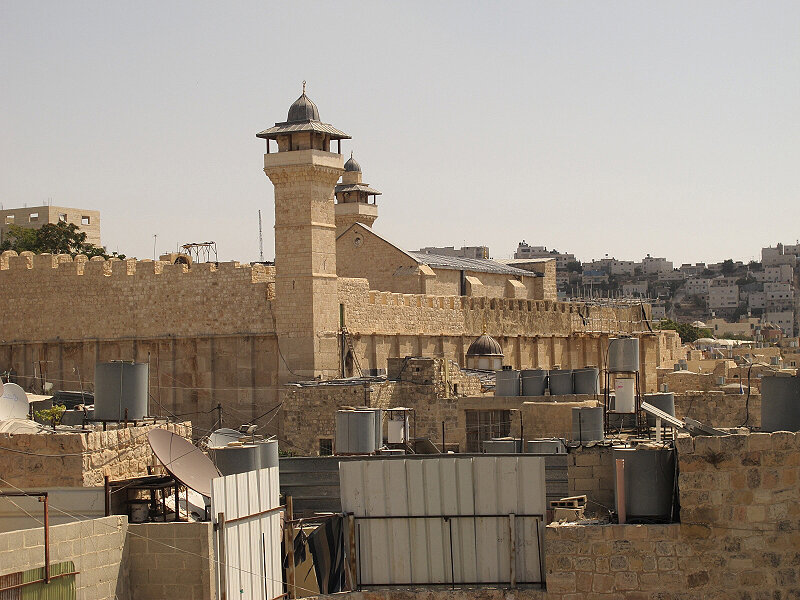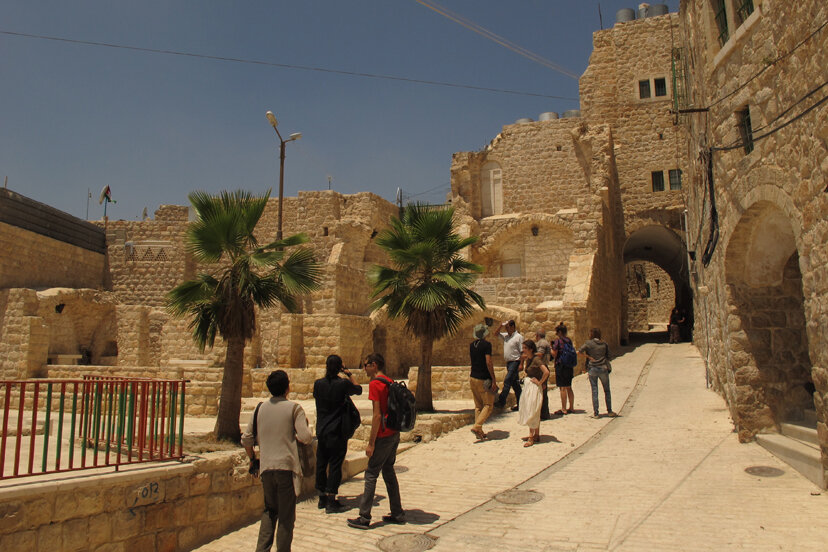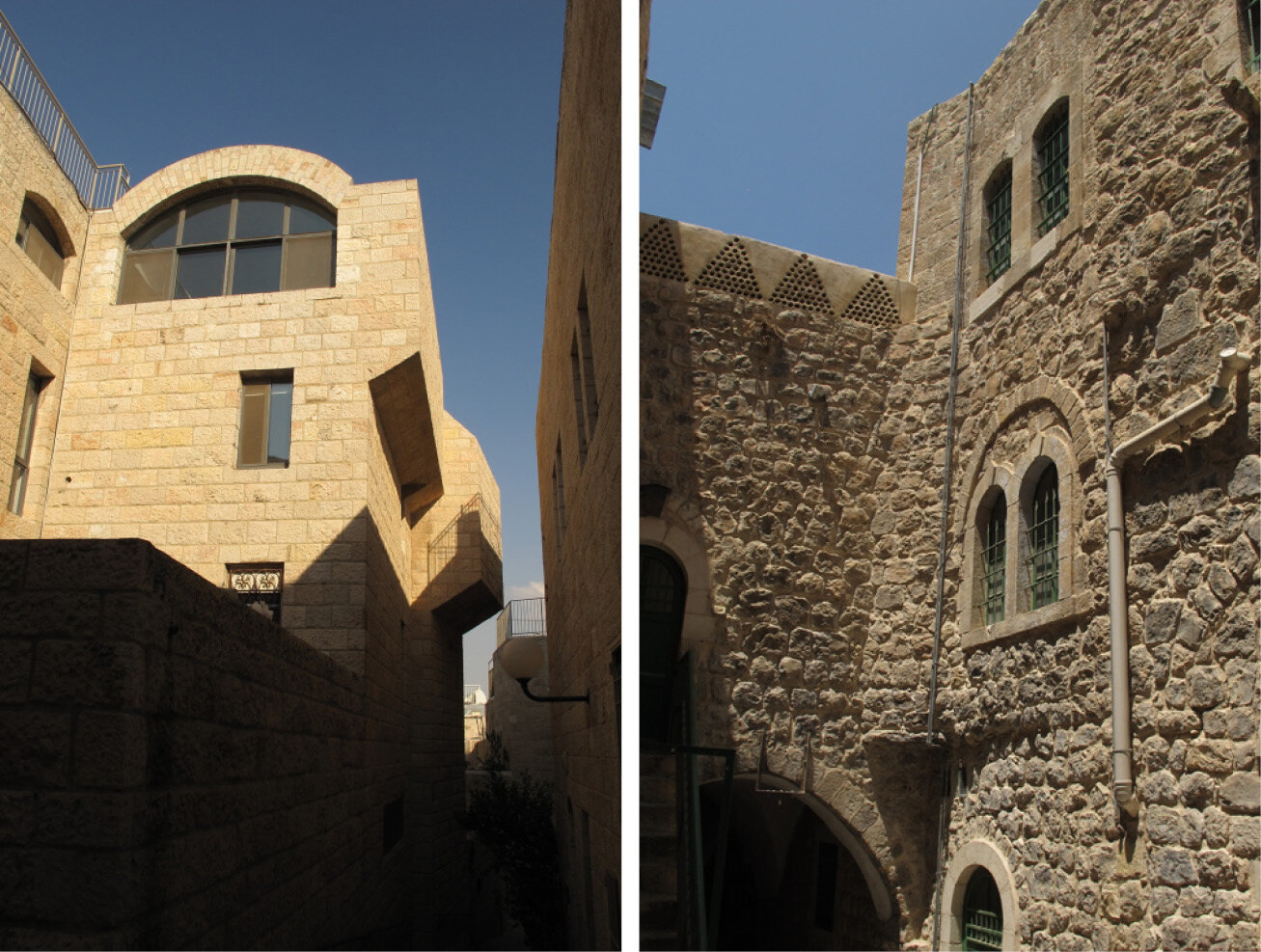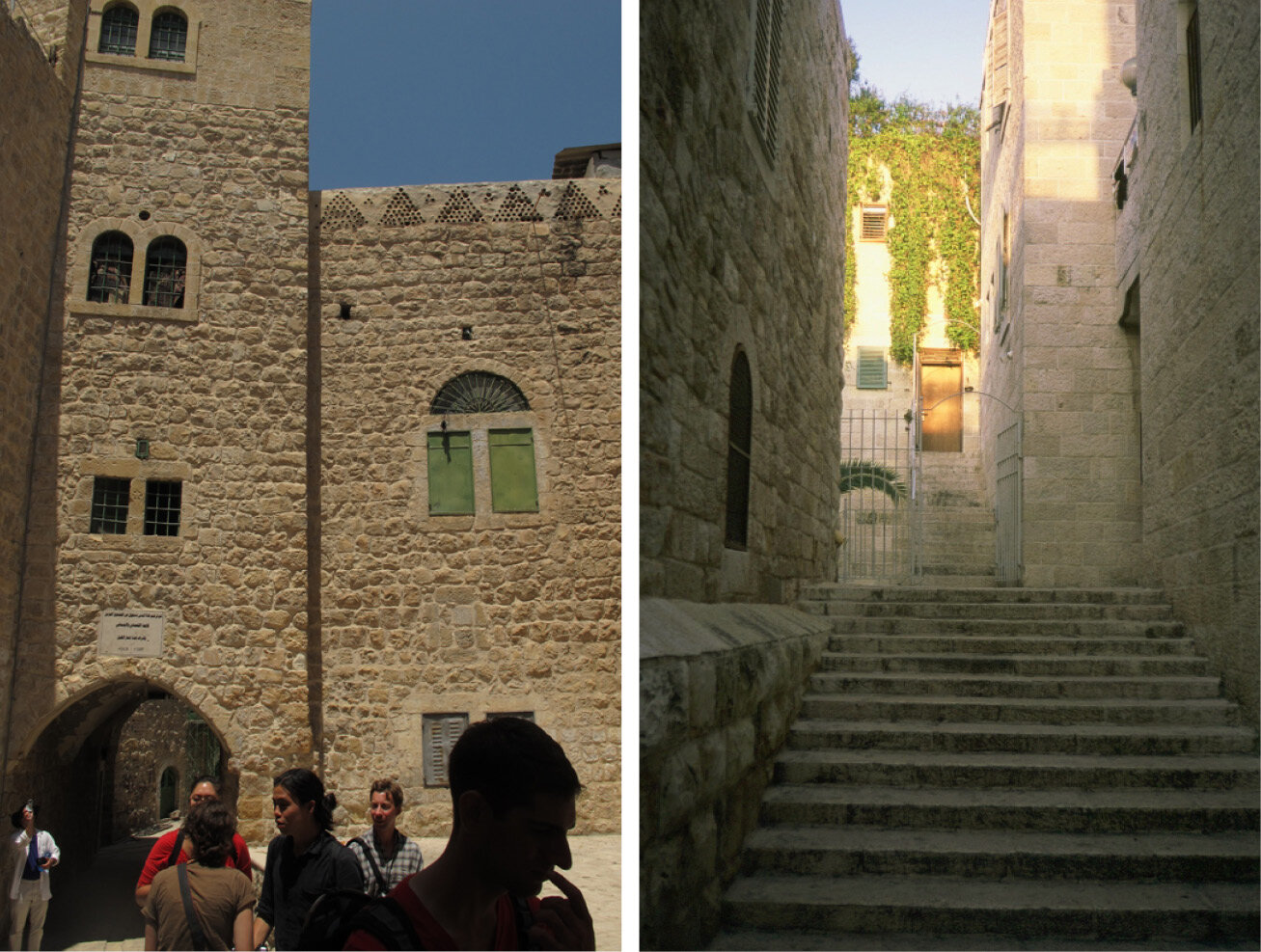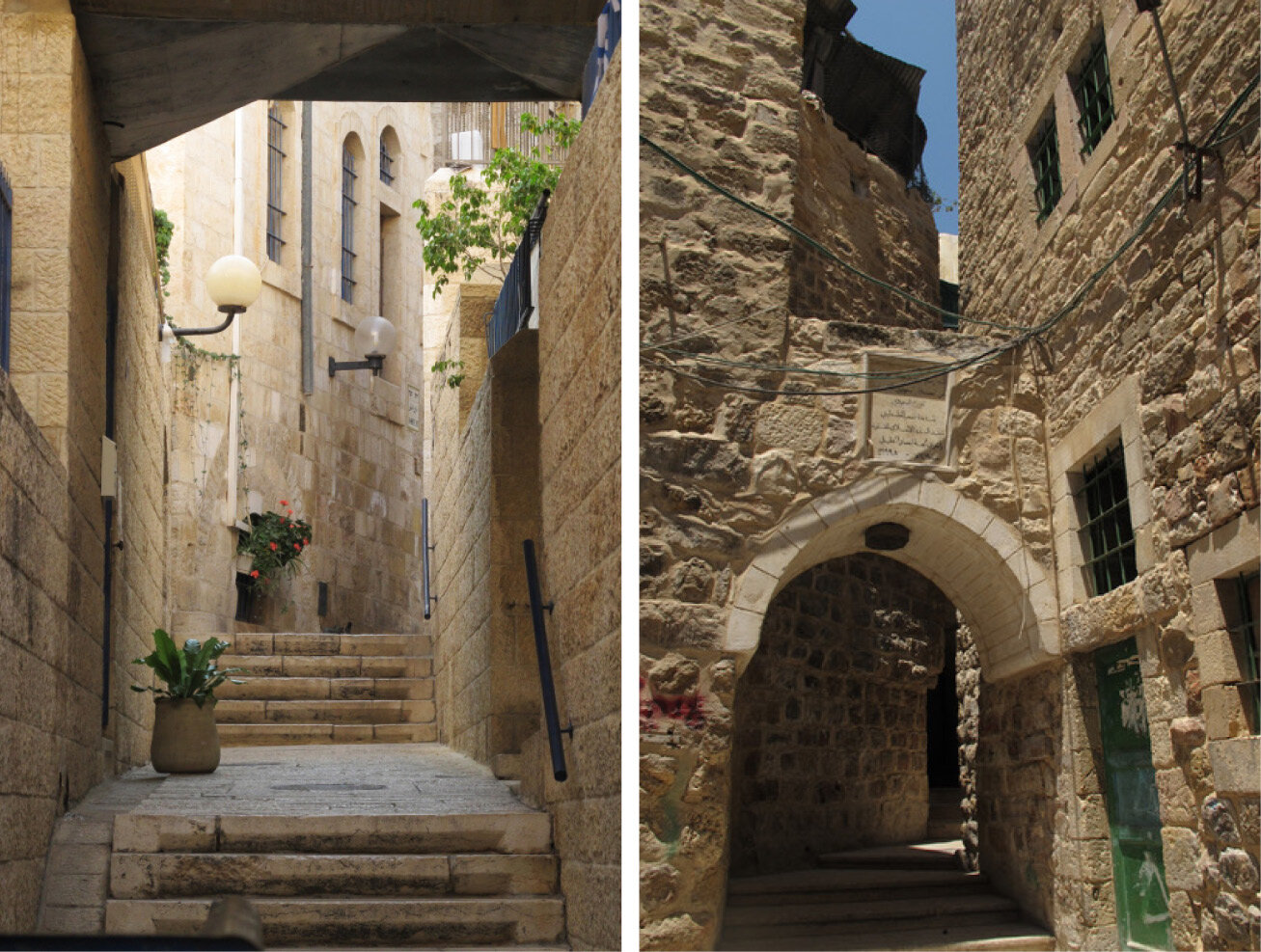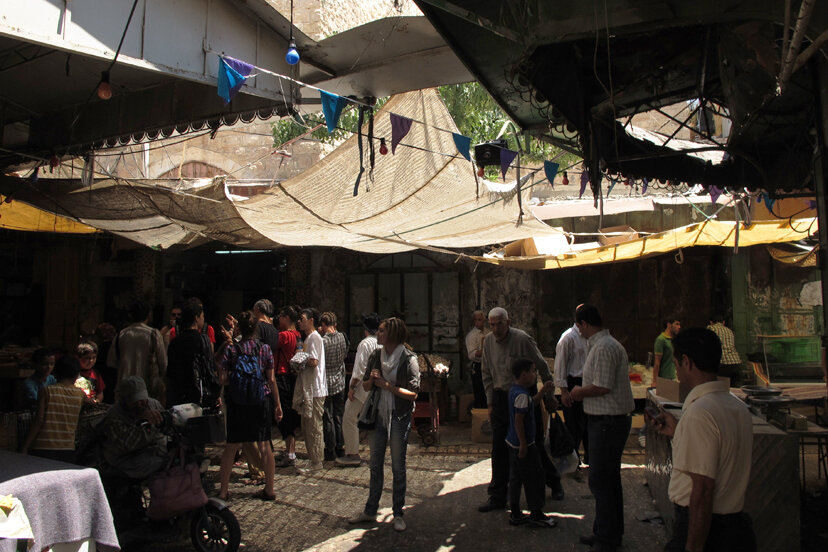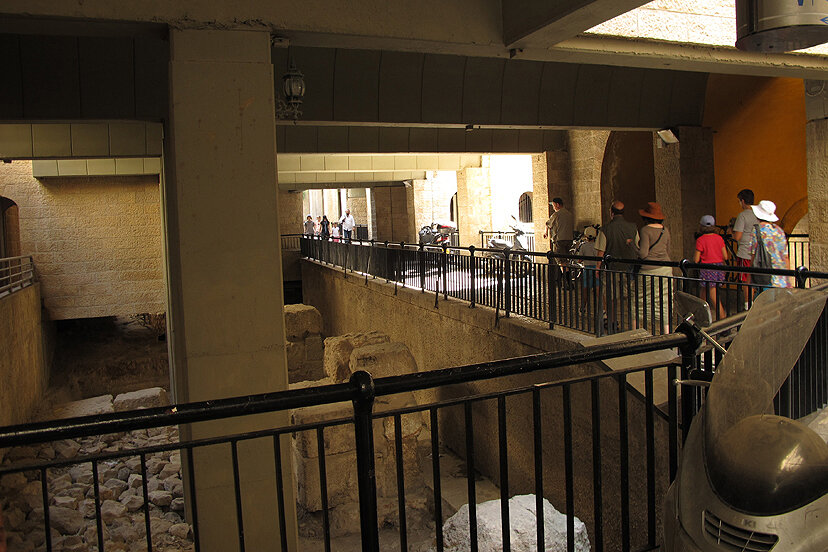Over more than six centuries, since the defeat of the crusaders and under the rule of the Mamluks and Ottomans, Jerusalem developed four distinct sections: the Christian Quarter, the Armenian Quarter, the Muslim Quarter, and the Jewish Quarter. The vernacular texture of the Jewish Quarter—courtyard housing forms, narrow passageways, winding and dead-end streets—was common to Muslim cities of the Middle East.
During the conflict of 1949, the Jewish Quarter was severely bombarded. Afterward, Arab forces further decimated the neighborhood, destroying its synagogues and yeshivas. After the Six-Day War, the government of Israel embarked on an effort to rebuild the ruined neighborhood. Initial surveys showed that about 50 percent of the sector’s damaged historic structures could be rehabilitated. The other half would have to be built anew. In an area subject to earthquakes, proper foundations were a necessity—an extremely complicated procedure in old Jerusalem, which sits on the rubble and ruins accumulated over thousands of years of recurring destruction. Thus, a major portion of the site would first become a painstaking archaeological dig guided by a panel of international scholars.
Several significant finds were made 20 to 40 feet below the surface: a wall from the first temple period of David and Solomon; remnants of a cluster of patrician dwellings from the period of Herod the Great; the architectural remains and furnishings of a Jewish house partially burned down during the Roman conquest of the city in AD 70; substantial elements of the Roman-Byzantine settlement; and parts of a Byzantine church constructed during the reign of the emperor Justinian.
In order to provide access to this material and to preserve it in place, it was decided to build the new houses of the Jewish Quarter on platforms suspended above the layers of history that until recently had been invisible. Below ground, and sometimes open to the sky, the city would become a museum in a three-dimensional network of passageways, stairs, and ramps that connected the quarter’s different parts. Aboveground, modern dwellings would be constructed of contextual design that knit together surviving fragments of the traditional vernacular townscape. The formal reference for the new buildings was the vernacular architecture of the Muslim Quarter, whose oldest intact antecedent is the Islamic core of Hebron, currently encroached upon by Israeli settlers, and recently restored thereby as a Palestinian residential historic district. Here in this portfolio, images of both places are intermixed.
(Photographs of Hebron were taken in 2011 and 2012 while teaching a preservation studio for the Columbia University School of Architecture, Planning, and Historic Preservation.)
